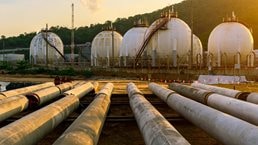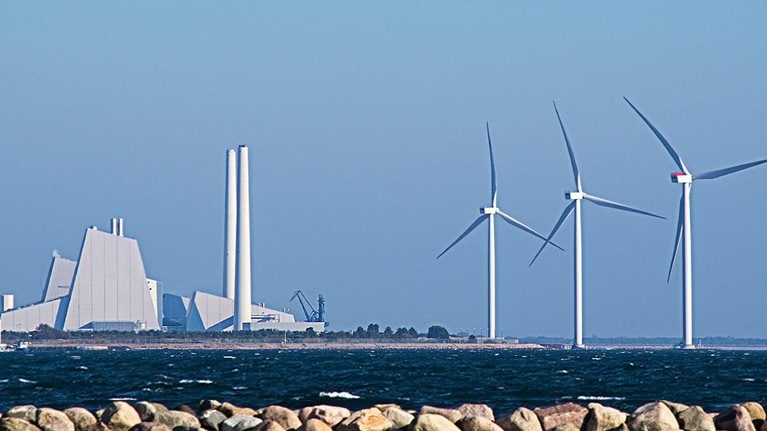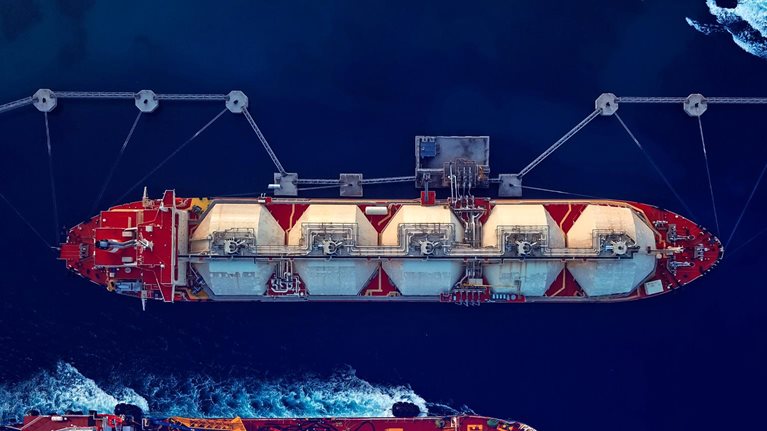Global demand for liquefied natural gas (LNG) is surging as regions with growing demand look to source from those with abundant supply. The urgency to meet this demand is intensifying due to growing energy demand from regions such as Asia, as well as the declining supply of domestic gas and the interruption of piped supply (for example, Russian piped gas supply to Europe).
The last two years have seen more than ten projects with over 100 million tons per annum (MTPA) of LNG capacity taking final investment decision (FID), many of these in North America. There is now unprecedented pressure on the industry to deliver these projects, as well as line up new projects that prepare to take FID.
The projects are largely concentrated along the Gulf Coast, where they are competing over a limited pool of resources—including labor, supplies, and engineering, procurement, and construction (EPC) contractors, who face growing backlogs. This is exacerbating cost escalations and financial pressures on project owners.
In this highly competitive market with rising capital costs, projects that have not yet reached FID may need to rethink their strategies, and projects that have already taken FID may need to build capabilities to monitor progress to deliver on schedule and avoid cost escalation.
This article explores the predicted continued rise in LNG demand and the key challenges that US-based developments face to meet it.
Would you like to learn more about our Oil & Gas Practice?
The looming LNG supply-demand gap
In McKinsey’s “Current Trajectory” and “Further Acceleration” energy-transition scenarios, global demand for LNG is expected to rise by 1.5 to 3.0 percent per year until 2035.1 By 2050, LNG is projected to almost double as a share of the global gas supply, from 13 to 24 percent.2
Demand is affected by several factors, internationally and domestically. It reflects the growing influence of climate change policies, which are increasing both the share of renewables in grids and end use electrification.
Domestic production of gas and LNG in Southeast Asia is dropping just as regional demand rises, due in part to the region’s accelerated energy transition efforts and diversification away from piped-gas imports.3 The conflicts in Europe (and the Middle East), meanwhile, is causing major disruption to international supply, contributing to a worldwide need for new LNG developments.
The United States could help fill this supply gap due to its advantaged gas resources and stable environment. Planned LNG supply developments in the United States could meet between 70 and 80 percent of future demand.4
The concentration of projects in the United States, however, could pose a barrier to the execution of new projects, threatening to create a supply-demand gap. Without action from the industry, the growth in demand could create a supply shortage ranging from 100 to 130 million tons per annum (MTPA) from 2030 onwards (Exhibit 1).

There is a risk to cost escalations for projects in the United States. To remain globally competitive, projects will need to keep costs of delivered LNG below $8 per million British thermal units (MMBTU) (Exhibit 2).

Barriers to LNG developments in the United States
There are more than 20 new LNG developments awaiting FID in the United States.5 However, as capital costs keep rising and EPC backlogs fill up, contractors are showing less desire to take on more risk as the vicious demand cycle for pre-FID Gulf Coast LNG projects continues.
The geographic location of these projects is a major factor, given that over 70 percent of all pre-FID US projects are located along the Gulf Coast.6 LNG projects are competing with other large scale projects (such as petrochemicals and renewables) for the same limited pools of local skills, suppliers, and contractors, driving up construction wages, per diems, and risking productivity declines. The impacts from competition are expected to continue to ripple beyond 2024 as demand from the Gulf Coast EPC market grows.
Already, these projects have witnessed a 10 to 20 percent cost escalation since the onset of the COVID-19 pandemic, driven primarily by a combination of price volatility in raw materials, escalation in labor costs, and rising equipment costs (Exhibit 3).7 These cost pressures are exacerbated by supply chain disruptions, which contribute to lengthening project schedules.

Prices for critical LNG construction materials, such as copper, hot-rolled coil steel, and aluminum are over 30 percent higher than in 2020, and the cost of rotating equipment has increased by up to 20 percent.8 Most equipment manufacturers report serious product backlogs, too—hampering the effort to supply new projects.
Analysis suggests that EPC contractors may need to expand capacity to deliver on the increasing demand for work (Exhibit 4). The pool of available contractors is shrinking, with most global large-volume LNG projects now executed by just six primary EPC contractors.9 This reduced pool of contractors is straining to deliver on significantly greater project demand. To make matters worse, the Gulf Coast market is already struggling against a substantial backlog of projects in oil and gas, petrochemicals, new energy, and advanced industries.

In response to rising labor costs and supply chain delays, contractors are having to include increased risk premiums and contingencies in their project estimates. This could put the economics of pre-FID LNG projects at risk. Traditional project-financing designs, involving Lump Sum Turnkey (LSTK) agreements, are becoming increasingly difficult to get right, too, given contractors’ reduced appetite for risk. As a result, US-based greenfield projects are finding it harder to secure project financing and fixed-price contract terms at competitive costs.

How North American natural gas could alleviate the global energy crisis
LNG project strategy may need to be reimagined
New strategies could make LNG projects more competitive, allowing them to deliver on time and within the required cost range. This may involve breaking certain conventions—such as the notion of “bigger is better” and the conventional bid-or-buy relationship between owners and contractors. Projects could consider a few key innovations to overcome the challenges facing the industry.
Exploring smaller modular trains, supplier-led, offsite construction. As a potential remedy to localization challenges, projects may benefit from pulling work offsite. To reduce craft labor, projects could move portions of work to modular yards or other offsite construction yards by building many smaller, modular trains instead, which can be pre-assembled offsite and rapidly installed and implemented.
Changing traditional contracting strategies. Shifting the contracting strategy, from giving an LSTK contract to one provider to bringing more contractors into negotiations during the planning stage of projects, could encourage competition and the formation of joint ventures or alternate contract structures. This could have a knock-on benefit for costs and increase the likelihood of securing project financing.
Re-allocating project risks among owners and suppliers. With fewer EPC contractors willing to accept fixed-price or LSTK contracts, and more uncertainty in the supply chain, the LNG industry may require a shift in its risk-sharing mechanisms. Projects that are looking to progress quickly will likely have to shoulder a greater burden of risk to attract EPCs. The industry is already changing to reflect this principle—in the last 12 months, a higher proportion of process-industry project contracts (including LNG projects) have used a wider range of risk-sharing mechanisms, such as index pricing and provisional sums.10
Managing cost and schedule risk. Organizations often face challenges in effectively managing costs and schedules, causing projects to frequently surpass budgets and timelines by 30 to 45 percent.11 This issue is exacerbated by a lack of transparency in project management, impeding timely decision making. To address these challenges, organizations require innovative technical solutions that can capture and analyze project data, much like a digital control tower. These solutions provide a real time window into project performance, enabling swift data-driven decision-making, and can help identify early warning signs of delays or issues in the supply chain (see sidebar, “Managing schedule (and cost) risk”).
US-based LNG projects are the world’s likeliest candidates to deliver on the growing demand for LNG. But they are facing serious supply challenges, driven by cost increases, capacity constraints, and supply-chain issues.
Bending the cost curve will require innovative solutions: the industry may need to rethink the conventional allocation of risk among owners, suppliers, and contractors. Successful future LNG projects may be those that harness repeatable, modular designs, collaborative project-management models, and new contracting strategies to reduce costs and risks for contractors.


